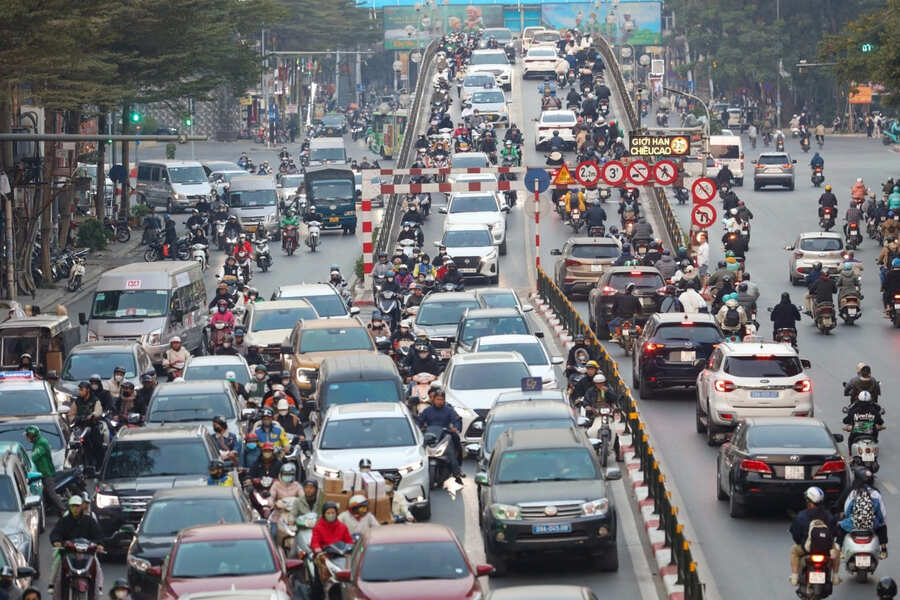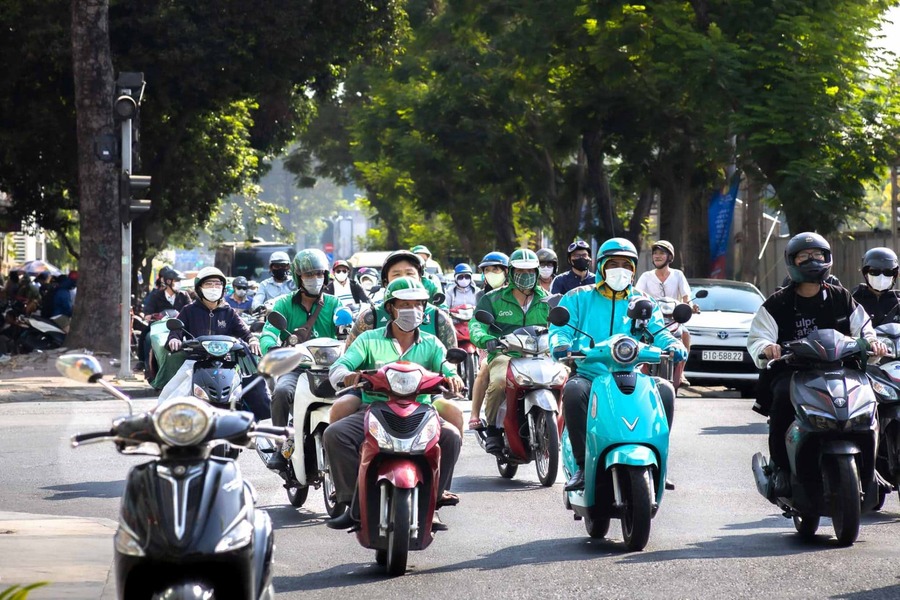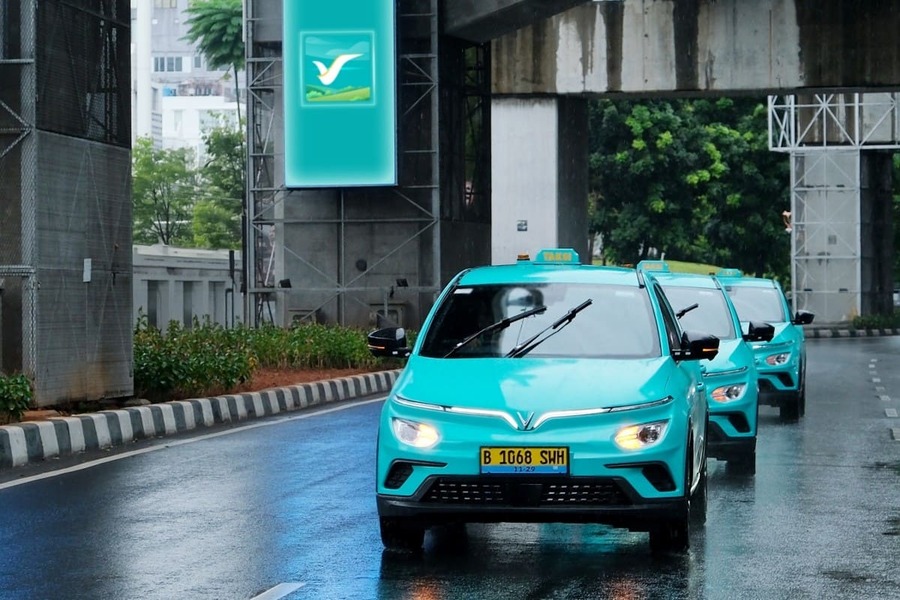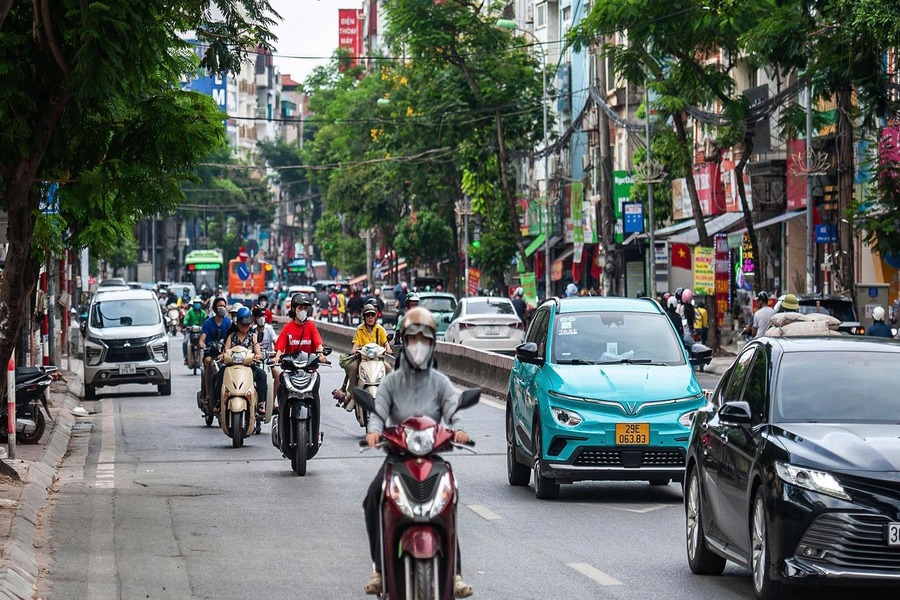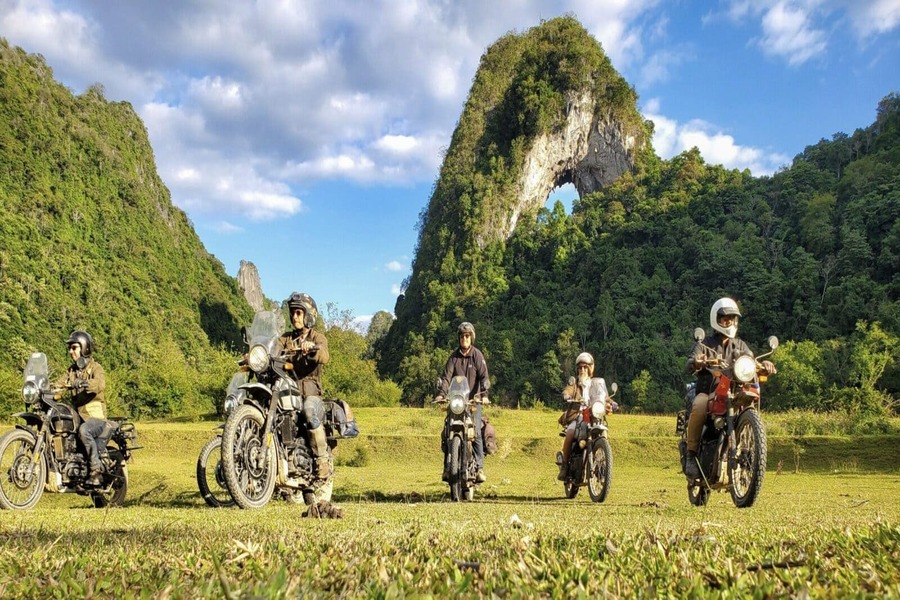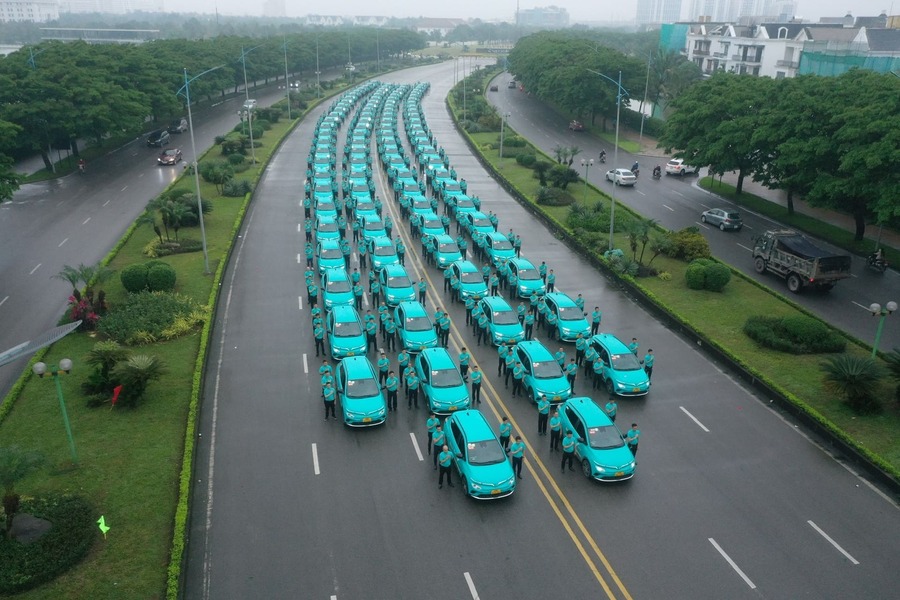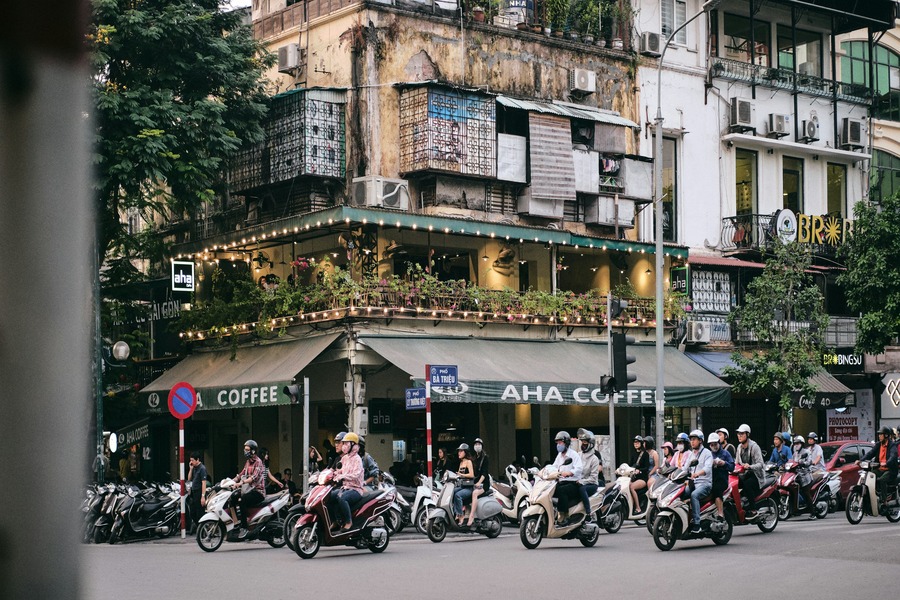Learn about Hanoi’s gas motorbike ban starting July 2026 under Directive 20/CT-TTg, aimed at reducing air pollution. Discover how this affects travel, sustainable transport options, and tips for exploring Hanoi with Go Vietnam Tours. Plan your eco-friendly adventure today!
Hanoi, Vietnam’s vibrant capital, is set to undergo a transformative change with the gas motorbike ban starting July 1, 2026, as outlined in Directive 20/CT-TTg issued by Prime Minister Pham Minh Chinh on July 12, 2025. This ambitious policy will prohibit fossil fuel-powered motorbikes within Ring Road 1, encompassing central districts like Hoan Kiem and Ba Dinh, to combat severe air pollution and promote green transportation. With Hanoi’s 6.9 million motorbikes – 6.4 million of which run on gasoline—contributing to its ranking among the world’s most polluted cities, this ban marks a bold step toward sustainability. For travelers, this shift impacts how you’ll explore Hanoi’s bustling streets, iconic Old Quarter, and cultural landmarks. This guide covers the Hanoi gas motorbike ban, its implications, sustainable travel alternatives, and practical advice for visitors on a Vietnam tour, ensuring a seamless experience with Go Vietnam Tours.
Why Hanoi Is Banning Gas Motorbikes
Hanoi’s decision to ban gas-powered motorbikes stems from escalating environmental concerns and a commitment to sustainable urban development. Here’s why this policy is critical:
Air Pollution Crisis in Hanoi
Hanoi frequently ranks among the world’s most polluted cities, with AQI levels ranging from 115-165 (poor to very poor) in July 2025. Vehicle emissions, particularly from the city’s 6.9 million motorbikes, release high levels of nitrogen dioxide and PM2.5 particles, contributing to over 60,000 annual deaths in Vietnam linked to air pollution, according to the WHO. The ban within Ring Road 1 targets high-traffic areas like the Old Quarter, where smog is most severe, to improve air quality and public health.
Push for Green Transportation
Directive 20/CT-TTg aligns with Vietnam’s national goal to phase out fossil fuel vehicles by 2045, starting with Hanoi’s urban core. The policy promotes electric vehicles (EVs) and public transport to reduce carbon emissions and combat climate change. By 2030, Hanoi aims to extend restrictions to Ring Road 3, with Ring Road 2 restrictions starting in 2028, and include gasoline-powered cars, signaling a long-term shift to green transportation.
Economic and Social Impacts
Motorbikes are integral to Hanoi’s economy, supporting jobs like ride-hailing (e.g., Grab drivers), deliveries, and daily commuting for 8.7 million residents. The ban raises concerns about displacing these vehicles to rural areas or creating mechanical waste, as many aging bikes may be discarded. Residents like Nguyen Van Hung, a Grab driver, worry about livelihoods, while others, like office worker Hoang Duy Dung, highlight the need for better public transport before such a drastic change.
Timeline of the Hanoi Gas Motorbike Ban
The Hanoi gas motorbike ban follows a phased approach under Directive 20/CT-TTg:
- July 1, 2026: Fossil fuel motorbikes banned within Ring Road 1, covering central districts like Hoan Kiem and Ba Dinh, known for tourism and business hubs.
- January 1, 2028: Ban extends to Ring Road 2, including additional urban areas, with restrictions on some gasoline-powered cars.
- 2030: Ban expands to Ring Road 3, connecting outer suburbs and highways, aiming for a near-complete shift to electric or clean-energy vehicles.
- 2045: National goal to phase out all gas-powered two-wheelers across Vietnam.
This roadmap, supported by the Hanoi People’s Committee, includes plans for low-emission zones (LEZs), with pilot zones launching in January 2025 and mandatory LEZs in high-pollution areas by 2031.
Challenges of the Gas Motorbike Ban for Hanoi
While the ban aims to improve air quality, it faces significant hurdles:
Infrastructure Readiness
Hanoi’s transition to electric vehicles requires robust infrastructure, including electric vehicle charging stations, reliable electricity supply, and EV maintenance services. As of 2025, only 5% of Hanoi’s two-wheelers are electric, with companies like VinFast and Selex Motors leading the market. Residents like Nguyen Thi Thanh express concerns about the high cost of EVs (15-30 million VND, ~$600-$1,200) and limited charging facilities, especially for older homes prone to electrical risks.
Public Transport Gaps
Hanoi’s public transport system, including buses and the developing metro, is not yet sufficient to replace motorbikes. Experts like Khương Kim Tao emphasize that motorbikes are a lifeline for low-income residents where buses are unreliable or inaccessible. The city plans to expand electric buses and metro lines by 2030, but progress is slow, raising doubts about readiness by 2026.
Economic Concerns
The ban could disrupt livelihoods for ride-hailing drivers, delivery workers, and small businesses reliant on gas motorbikes. Experts predict “gas bike dumping” in rural areas like Bac Ninh or Hung Yen, shifting pollution rather than eliminating it. Without financial incentives or trade-in programs, many residents may struggle to afford EVs.
How the Gas Motorbike Ban Affects Travelers
For tourists visiting Hanoi, the gas motorbike ban will change how you navigate the city, particularly in the Ring Road 1 area, which includes the Old Quarter, Hoan Kiem Lake, and key attractions. Here’s what travelers need to know:
Restricted Areas
Starting July 2026, gas-powered motorbikes, commonly used for tours and rentals, will be banned within Ring Road 1. This affects popular spots like:
- Old Quarter: Known for street food and markets.
- Hoan Kiem Lake: A cultural hub with Ngoc Son Temple.
- Ba Dinh District: Home to the Ho Chi Minh Mausoleum and One Pillar Pagoda.
Travelers relying on motorbike taxis (e.g., Grab) or rentals will need to use electric motorbikes, bicycles, or public transport in these areas.
Impact on Motorbike Tours
Motorbike tours, a popular way to explore Hanoi’s vibrant streets, will shift to electric motorbikes or alternative transport. Operators like Go Vietnam Tours are adapting by offering EV-based tours, ensuring eco-friendly experiences without compromising the thrill of exploring Hanoi’s alleys and markets.
Air Quality Benefits for Visitors
The ban aims to reduce smog, improving the experience for tourists exploring outdoor sites like the Temple of Literature or West Lake. Cleaner air means better visibility and a healthier environment for walking or cycling tours.
Sustainable Travel Alternatives in Hanoi When Gas Motorbike is Banned
To align with Hanoi’s green transportation goals, travelers can adopt eco-friendly ways to explore the city:
Electric Motorbikes and Scooters
Electric motorbikes are increasingly available for rent, with companies like VinFast offering models like the Vento S ($1,000-$1,500). Rentals cost $5-$10/day, and charging stations are expanding in central Hanoi. Book EV rentals through Go Vietnam Tours for guided tours that navigate the ban restrictions.
Public Transport Options
- Electric Buses: Hanoi is upgrading its electric bus fleet, with 8- to 12-seater buses serving inner-city routes by 2026 ($0.30-$0.50/ride). Routes cover major attractions like the Hanoi Opera House.
- Metro: The Cat Linh-Ha Dong metro line is operational, with more lines planned by 2030 ($0.50-$1/trip). It’s a clean, efficient way to reach areas outside Ring Road 1.
- Cyclo Tours: Traditional pedal-powered cyclos ($5-$10/hour) offer a slow-paced, eco-friendly way to explore the Old Quarter.
Travel Tip: Use apps like BusMap Hanoi or Moovit for real-time public transport schedules.
Bicycles and Walking
Bicycles ($2-$5/day) are ideal for exploring flat areas like the Old Quarter or West Lake. Walking tours, especially with Go Vietnam Tours, cover cultural sites and street food scenes, perfect for navigating the ban zone. Wear comfortable shoes and carry a reusable water bottle for sustainability.
Ride-Hailing Services
Apps like Grab and Be are transitioning to electric scooters in Hanoi’s core. Book electric GrabBike rides ($1-$3/trip) for short distances within Ring Road 1. Always confirm the vehicle is electric to comply with the ban.
Practical Travel Advice for Hanoi’s Gas Motorbike Ban
To ensure a smooth visit to Hanoi post-2026, follow these tips tailored for travelers:
Plan Your Itinerary Around the Ban
Focus on attractions within Ring Road 1 using sustainable transport:
- Day 1: Explore the Old Quarter with a walking or cyclo tour ($10-$20). Visit Dong Xuan Market and enjoy street food.
- Day 2: Use electric buses to reach the Ho Chi Minh Mausoleum and Temple of Literature ($1-$2). Book with Go Vietnam Tours for guided EV tours.
- Day 3: Rent an electric motorbike ($5-$10) for a countryside trip to Bat Trang Ceramic Village, outside the ban zone.
Travel Tip: Check with your tour operator for ban-compliant transport options. Go Vietnam Tours offers customized itineraries.
Use Eco-Friendly Tour Operators
Choose operators committed to sustainable travel, like Go Vietnam Tours, which provides electric motorbike tours, cycling adventures, and public transport guides. These tours ensure compliance with the ban while offering authentic Hanoi experiences, such as food tours or cultural workshops.
Stay Informed on Charging Infrastructure
Hanoi is developing electric vehicle charging stations in public parking lots and residential areas, expected to be operational by mid-2026. For EV rentals, confirm charging locations with your provider. Carry a portable charger for short trips and use apps like PlugShare to locate stations.
Respect Local Regulations
The ban will be enforced with checkpoints and fines within Ring Road 1. Avoid using gas-powered motorbikes in restricted areas to prevent penalties. Follow signage and consult local guides for updates on low-emission zones (LEZs) starting January 2025.
Pack for Sustainable Travel
- Essentials: Lightweight clothing, reusable water bottle, and eco-friendly sunscreen to stay comfortable in Hanoi’s humid climate.
- Health: Use masks if air quality dips during your visit (check IQAir for real-time AQI). Carry hand sanitizer for public transport.
- Apps: Download Grab, BusMap Hanoi, and Google Translate for navigation and communication.
Hanoi’s Green Future: Benefits for Travelers
The Hanoi gas motorbike ban aligns with global trends toward sustainability, offering long-term benefits for tourists:
- Cleaner Air: Reduced smog enhances visibility and comfort at outdoor sites like Hoan Kiem Lake or the Imperial Citadel.
- Quieter Streets: Electric vehicles lower noise pollution, creating a more pleasant experience in the Old Quarter.
- Cultural Preservation: Cleaner air protects Hanoi’s historic sites, ensuring they remain vibrant for future visitors.
- Eco-Tourism Opportunities: The ban encourages sustainable tours, such as EV-based countryside trips or cycling along the Red River.
By choosing green transportation, travelers contribute to Hanoi’s environmental goals while enjoying a healthier, more immersive experience.
Budgeting for a Sustainable Hanoi Trip
A 5-day mid-range trip to Hanoi post-2026 costs ~$250-$400 per person:
- Transport: $30-$50 (electric buses, GrabBike, bike rentals).
- Accommodation: $100-$200 (mid-range hotels like Hanoi La Siesta, $20-$40/night).
- Activities: $50-$100 (tours, entry fees).
- Food: $50-$100 (street food and restaurants).
- Miscellaneous: $20-$50 (souvenirs, tips).
Travel Tip: Book through Go Vietnam Tours for bundled packages that include eco-friendly transport and activities.
Hanoi’s gas motorbike ban starting July 2026 marks a pivotal shift toward green transportation, addressing the city’s air pollution crisis while enhancing the travel experience. By embracing electric motorbikes, public transport, and cycling, tourists can explore Hanoi’s cultural treasures sustainably. Whether navigating the Old Quarter or venturing to Ninh Binh, Go Vietnam Tours offers eco-friendly itineraries that comply with the ban and showcase Hanoi’s charm. Plan your 2026 adventure today and contribute to a cleaner, greener Hanoi! Share your travel plans or questions in the comments below.

